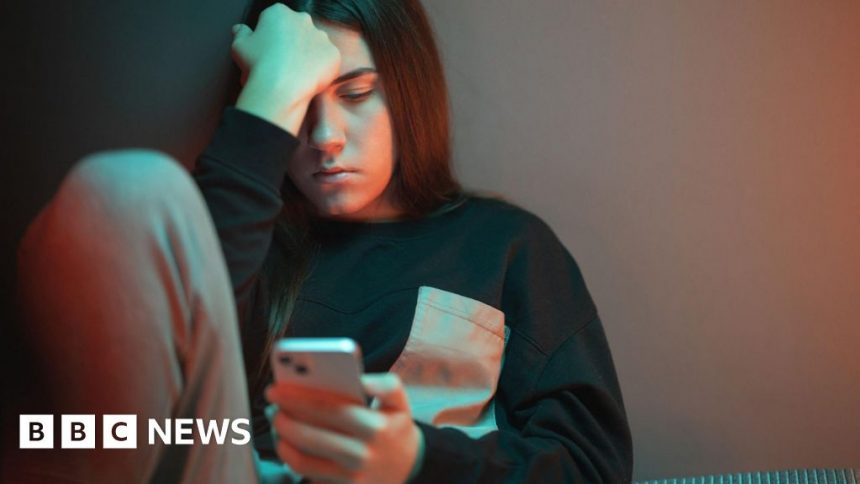Sharp rise in problematic teenage social media use, study says
 Getty Images
Getty ImagesA major international study suggests there has been a sharp rise in what it calls “problematic” social media use among young people since the pandemic.
Researchers came to the conclusion after surveying almost 280,000 children aged 11, 13 and 15 across 44 countries.
The Health Behaviour In School-aged Children (HBSC) study found, on average, 11% of respondents engaged with social media in a problematic way in 2022 – compared to 7% in 2018.
England, Scotland and Wales all recorded figures above that average.
The report’s authors say the findings “raise urgent concerns about the impact of digital technology on the mental health and well-being of Europe’s youth”.
They say more action is needed to “promote healthy online behaviours.”
“Problematic use is most common amongst 13-year-olds – it sort of peaks in that early adolescence phase and girls are more likely to report problematic social media use than boys,” said the study’s international co-ordinator Dr Jo Inchley, from the University of Glasgow.
She said the research also revealed how much time young people spend online.
“Across the study as a whole, we found just over a third of adolescents report continuous online contact with friends and others,” she said.
“That means almost all the time throughout the day they are connected online to friends and other people.”
The report does not conclude all that time spent online is detrimental.
Instead, teenagers who were heavy, but not problematic, users of social media reported stronger peer support and social connections.
But for the “problematic” minority it found social media use was associated with addiction-like symptoms including:
- neglect of other activities in favour of spending time on social media
- frequent arguments about use
- lying about how much time is spent online
- an inability to control social media use and experiencing withdrawal
It also highlights concerns about the proportion of teenagers considered to be at risk of “problematic gaming” – something it suggests applies to boys more than girls.
That designation applied to 15% of teenagers in England – the second highest proportion across all countries studied.
The average proportion of boys who played daily was 46%, but this figure stood at 52% in England and 57% in Scotland.
And 13-year-old boys in England reported the highest rate of long gaming sessions, with 45% of boys of that age indicating that they played for at least four hours on gaming days.
Positive and negative consequences
The study has been published by the European arm of the World Health Organisation (WHO).
Dr Hans Henri P Kluge, the WHO’s regional director for Europe, said the findings made clear social media could have both positive and negative consequences for young people.
He said there needed to be more “digital literacy education” to help young people develop a healthy approach to being online, and governments, health authorities, teachers and parents all had to play their part.
“It’s clear we need immediate and sustained action to help adolescents turn the tide on potentially damaging social media use, which has been shown to lead to depression, bullying, anxiety, and poor academic performance,” he said.
Ben Carter, Professor of Medical Statistics at the Institute of Psychiatry, Psychology & Neuroscience, described the report as a “useful snapshot of the evidence”.
But he pointed out it was difficult to agree on a definition of what “problematic social media” was, making gathering data on it challenging.
Nonetheless, he said the study was a “valid contribution to the evidence base”.








